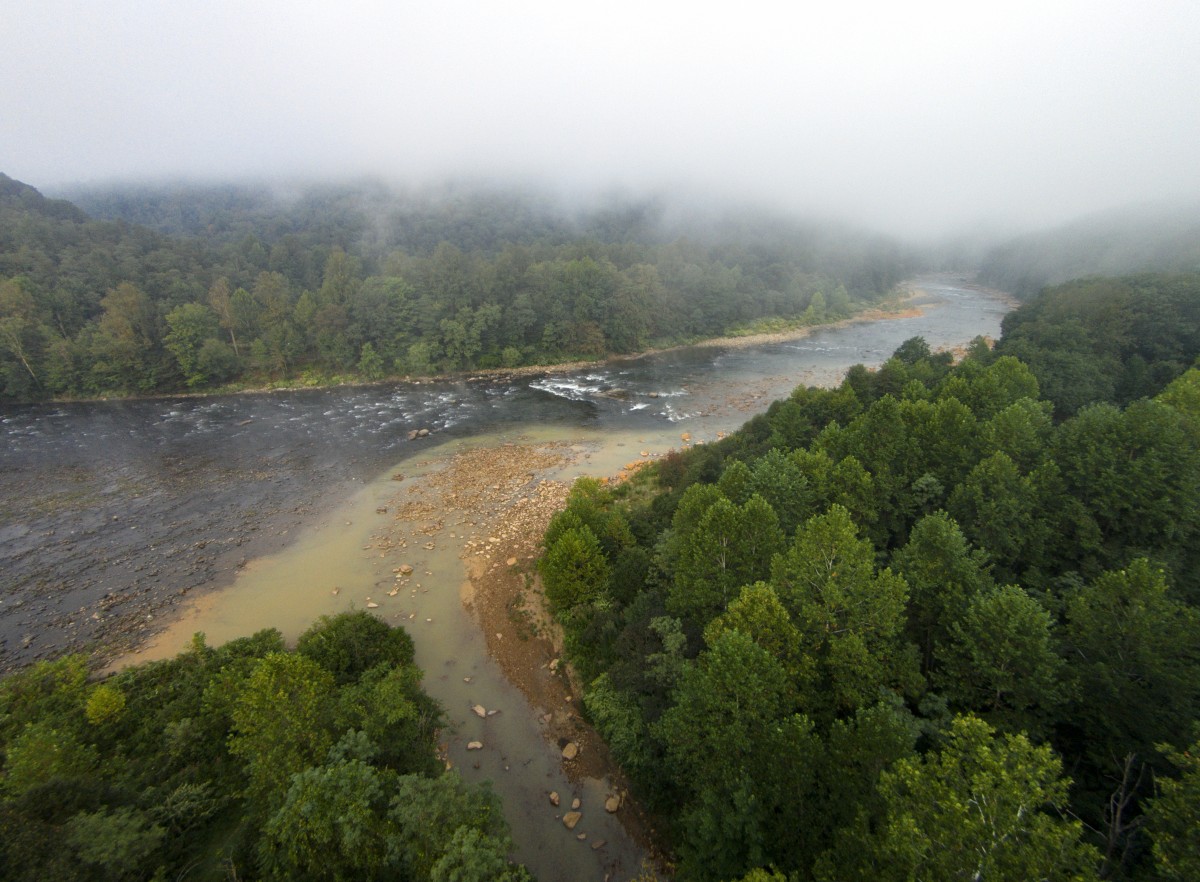Stream conditions for Muddy Creek and the Cheat River are returning to normal following a recent discharge of untreated water related to the former T&T Mine in Preston County, but Friends of the Cheat remains concerned of what the aftermath means for the ecosystem.
“We had this fishery and this ecosystem starting to come back to Muddy Creek,” said Madison Ball, Friends of the Cheat restoration program manager. “Now, it’s kind of like we have been pushed back to square one in that section of the creek.”
Ball said Friends of the Cheat was created, in part, due to blowouts that occurred in 1994 and ’95. One of the organization’s main goals has since been to take action against the devastating impacts of acid mine drainage pollution.
Prior to restoration efforts by the organization, mainly pollution-tolerant species were able to survive in the area. The organization has since observed the return of several acidic-sensitive species, including a range of benthic macroinvertebrates or “stream bugs,” walleye, smallmouth bass and hellbenders.
Ball said based on the low pH levels recorded, many of these species were likely wiped out or were forced to migrate into cleaner waters. Friends of the Cheat is still awaiting testing results on aluminum and iron levels, which are both formed from acid mine drainage. These metals can have severe impacts on aquatic life and species’ reproduction processes.
“Having a diverse, native group of fish and benthic macroinvertebrate species is important for overall river health,” Ball said. “If you imagine a web connecting species to one another based on their interactions, when you start to remove these species, the web collapses. This is symbolic of the health of the river.”
The cause of the incident is still under investigation, but it is believed an increase in rainfall may have flushed out pools of water within the closed mine, which likely contributed. Periodic roof collapses within the mine may have also been a factor.
Ball said the high-flow event was an unsettling experience for the organization, and it raises the question of how increased precipitation due to climate change will affect the area in the future.
“We know that this area is going to experience warmer and wetter conditions over the next decade or more,” Ball said. “Our concern from here is just making sure that this is not something that occurs on any sort of regular interval.”
Delegate Evan Hansen, D-Monongalia, said to help the stream return to normal conditions, the West Virginia Department of Environmental Protection has been using strategies such as adding additional alkaline materials to the treated water to raise the pH balance.
Although many of the strategies being used are temporary fixes to the problem, Hansen, who is also president of Downstream Strategies, said the WVDEP is working to find long-term solutions.
“DEP is committed to fixing this,” Hansen said. “It may take some time, but they are committed to doing what it takes to clean up Muddy Creek as soon as possible.”
Terry Fletcher, WVDEP acting communications director, said the T&T Mine is classified as a special reclamation site. This means the party responsible for the incident previously filed for bankruptcy, forfeiting its bond to the state.
This forfeit also results in the operator being blacklisted and banned from involvement in the coal mining industry in the state. These special reclamation sites are funded by the Special Reclamation Fund, which is a combination of bond forfeitures as well as a per-ton tax on coal currently being mined.
“Where the high flow event occurred is a special reclamation site,” Fletcher said. “Any damages stemming from it would be funded by the SRF.”

Ball said the organization first saw signs of the discharge March 4. while conducting routine check-ups on the area. Ball said they immediately noticed the water was discolored and cloudy, and pH tests showed the levels were alarmingly low.
The organization immediately reached out to the West Virginia Department of Environmental Protection to inquire about the T&T Treatment Facility used for acid mine drainage treatment. According to a press release from the WVDEP, it was found large amounts of highly acidic water had been discharging from the former mine site at around 6,200 gallons per minute
The site typically can treat 4,200 gallons of water per minute, and can sustain up to 7,600 gpm. The sudden increase caused damage to the conveyance pipe, causing a section of the manhole to separate and that resulted in 300 to 500 gpm to bypass the treatment system.
Muddy Creek conditions are continuing to be monitored, and Friends of the Cheat is working to find a solution to prevent future incidents. Regular updates can be found by visiting www.cheat.org and viewing the Muddy Creek gauge live data stream.
“It can be a little discouraging,” Ball said. “But, we are trying to pull our boot straps up and the next step is to just make sure it doesn’t happen again.”
TWEET: @GabbyABrown_




